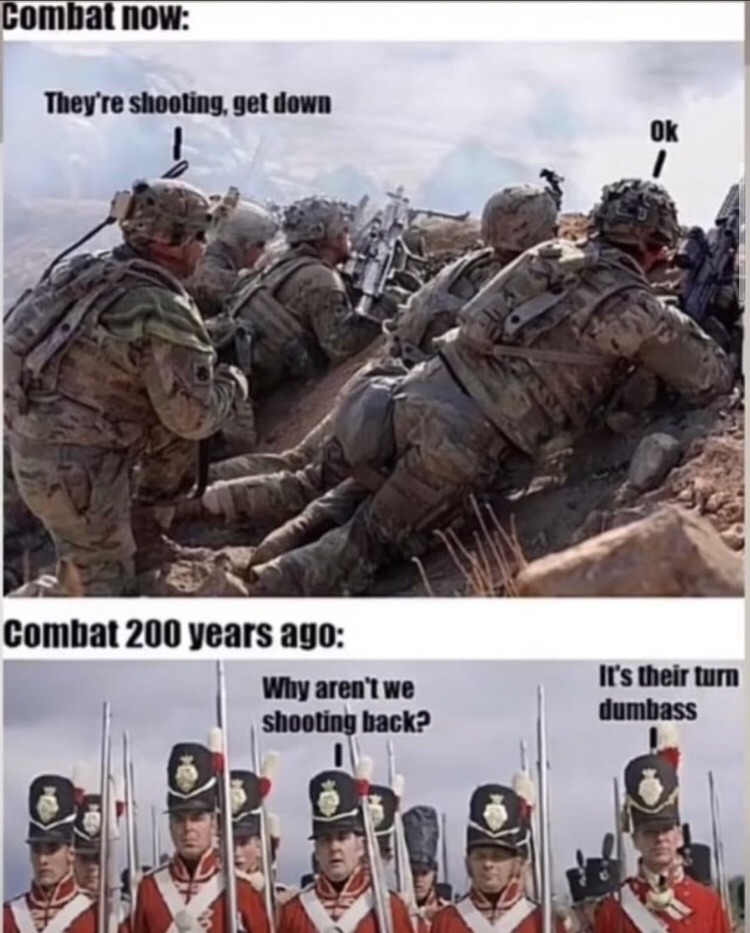Edit Eh it wasn't turn based, really. Also I get that this is a meme, I just feel like rambling.
The older combat was still rooted in set piece maneuvers, and without smokeless powder, visibility was a huge issue. keeping an eye on your units (as a commander) and your peers (as a lower leader) was critical.
Also, cavalry was still a thing, and if your units were dispersed, it was very easy to get owned by roving cavalry.
Also the rate of fire, and functional accuracy was something that took lots of training then. They weren't waiting for the other guys turn, they were considering how fast their troops could load, and when they can use their volley to the greatest advantage. You didn't want to be halfway through a reload command when a charging unit gets on top of you. So sure, sometimes they would reserve their shot instead of firing that moment... But it was a gamble that:
- The enemy was shooting too early, and would have bad accuracy / impact.
- The enemy might charge right after shooting, so reserving your shot meant you could blast them when they get near.
- Maybe cavalry or another high risk enemy unit is "around" and you think you shouldn't be caught with your pants down.
These are random ramblings, not a complete coverage of the concerns.
Source: nothing.
